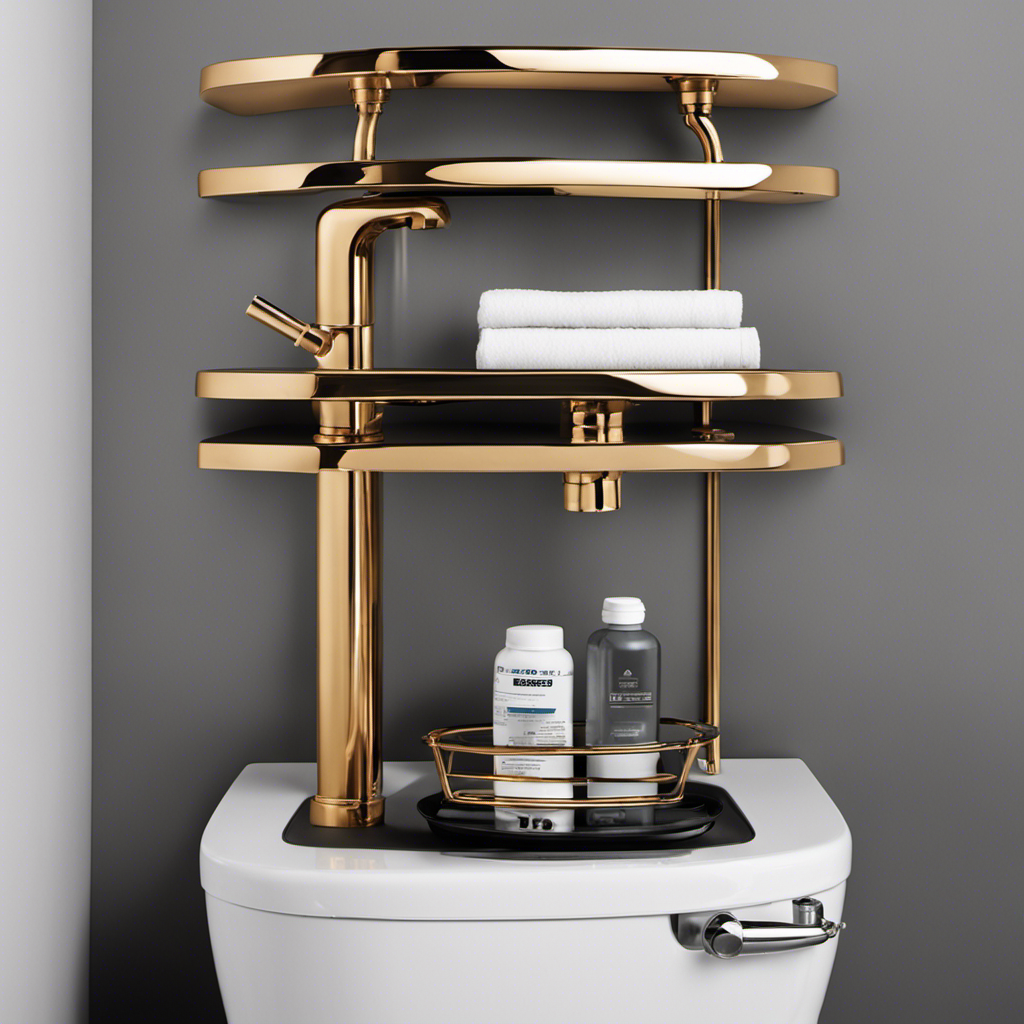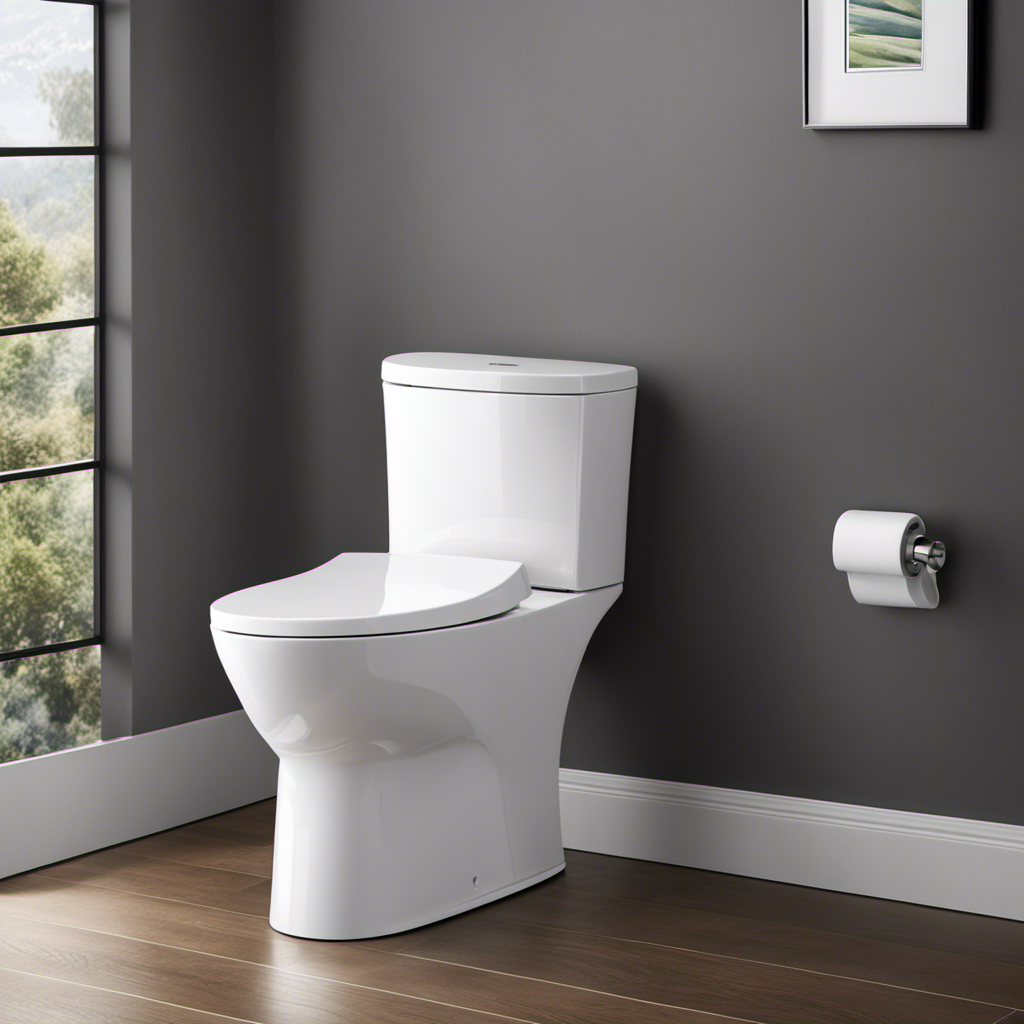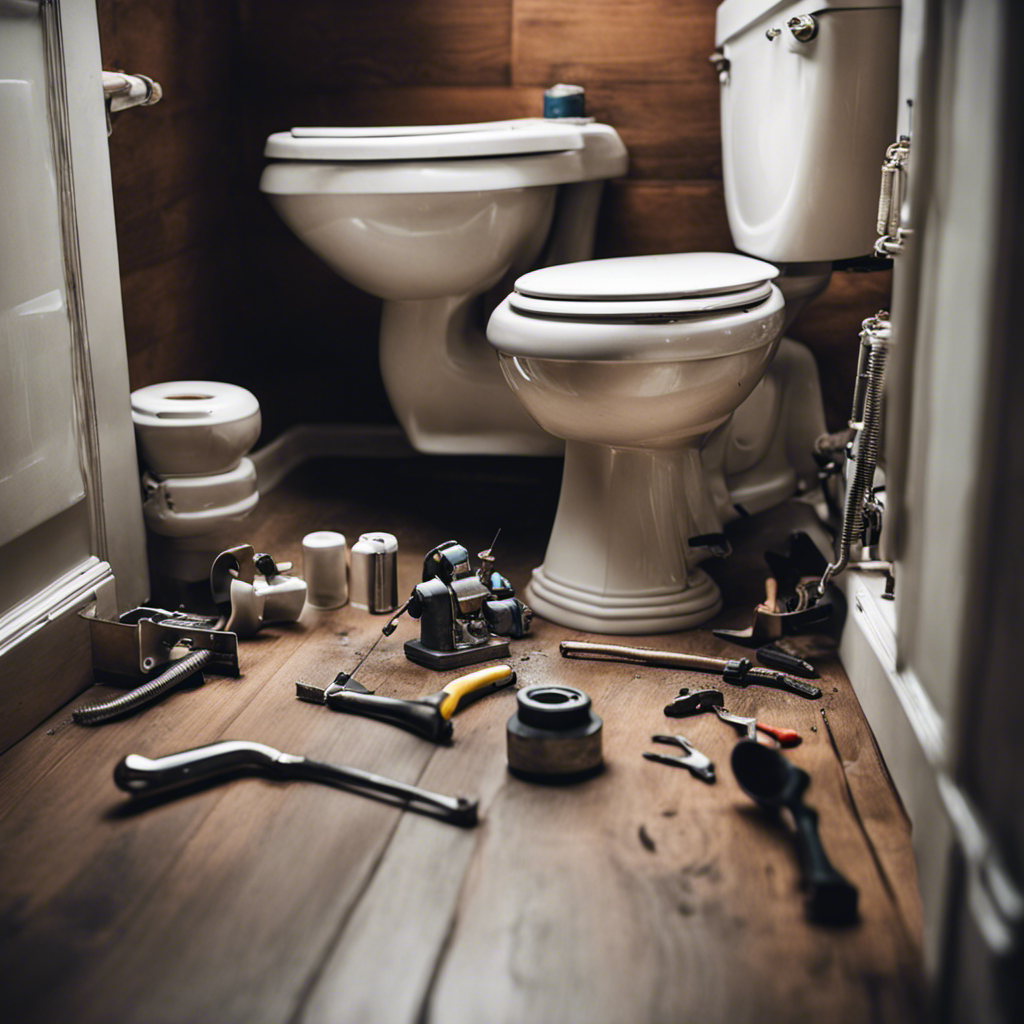I’ve encountered a frustrating problem that many of us have faced: a toilet tank that won’t fill properly. It’s a common issue that can disrupt our daily routines and leave us feeling helpless.
But fear not! In this article, I will guide you through the common causes of this problem and provide practical solutions to get your toilet tank back to its fully functional state.
So let’s dive in and unravel the mysteries behind a non-filling toilet tank together!
Key Takeaways
- The float ball or float arm may need to be adjusted to the correct level to ensure proper filling of the toilet tank.
- If the fill valve is faulty, it may need to be replaced to fix the issue of the toilet tank not filling properly.
- Proper sealing of the flapper is important to prevent water leakage and ensure proper filling of the toilet tank.
- Leaky or broken overflow tubes should be checked and fixed to ensure the toilet tank fills properly and to prevent overflow.
Common Causes of a Toilet Tank Not Filling Properly
The most common causes of a toilet tank not filling properly are:
- A float ball or float arm that’s the wrong height
- A fill valve that needs replacing
- A flapper that isn’t sealing correctly
- A leaky or broken overflow tube
- A blocked water supply line
Troubleshooting toilet tank issues starts with proper toilet tank maintenance. To fix a float ball or float arm that’s the wrong height, adjust it to the correct level. If the fill valve needs replacing, install a new one. To address a flapper that isn’t sealing correctly, replace it with a new one that fits properly. If the overflow tube is leaky or broken, check and replace it as needed. Finally, if the water supply line is blocked, clear the blockage to restore proper water flow.
Fixing the Float Ball/Float Arm Height
Adjusting the float ball and float arm height is a simple fix for a toilet that isn’t filling correctly. When the float arm is too low, it can prevent the float ball from rising high enough to activate the fill valve.
To troubleshoot the float ball, first, locate the float arm and adjust its height by bending it slightly. This will allow the float ball to rise higher and signal the fill valve to start filling the tank.
It’s important to ensure that the float ball is not touching any other parts in the tank, as this can also interfere with its proper functioning.
Replacing the Faulty Fill Valve
Replacing the faulty fill valve is a straightforward solution for resolving the problem of a toilet that doesn’t fill correctly. It is important to identify and address the cause of the problem promptly as part of toilet tank maintenance and troubleshooting toilet issues. The fill valve is responsible for regulating the water level in the tank, and if it is faulty, it can lead to a toilet that doesn’t fill properly.
To replace the fill valve, follow these steps:
- Shut off the water supply to the toilet.
- Flush the toilet to remove any remaining water in the tank.
- Disconnect the water supply line from the fill valve.
- Unscrew the lock nut holding the fill valve in place.
- Remove the old fill valve and replace it with a new one.
- Secure the new fill valve with the lock nut.
- Reattach the water supply line.
- Turn on the water supply and check for any leaks.
Ensuring Proper Sealing of the Flapper
When ensuring proper sealing of the flapper, I need to check if it is closing tightly to prevent water from continuously flowing into the toilet bowl. To maintain the flapper, I should:
-
Inspect the flapper for any signs of wear or damage. If it’s worn out or cracked, it may not seal properly and should be replaced.
-
Clean the flapper and the area around it to remove any debris or mineral buildup that could interfere with its sealing ability.
-
Adjust the chain or strap that connects the flapper to the flush valve, making sure it’s not too tight or too loose. This will help ensure a proper seal when the flapper closes.
Troubleshooting fill valve issues is also crucial for proper toilet functionality. If the fill valve isn’t functioning correctly, it can lead to problems with the tank filling properly. Some common troubleshooting steps include:
- Checking the water supply line for any blockages.
- Replacing the fill valve if necessary.
- Adjusting the float ball or arm to the correct height.
Checking and Fixing Leaky or Broken Overflow Tubes
I need to inspect the overflow tube to determine if it’s leaky or broken and then fix it accordingly. When dealing with leaky or broken overflow tubes in a toilet tank, there are several DIY solutions that can be considered.
Let’s compare different methods to fix this issue.
-
Check the connection: Ensure that the overflow tube is securely connected to the fill valve and the flush valve. If it’s loose, tighten the connections.
-
Replace the gasket: If the overflow tube is leaking due to a faulty gasket, replace it with a new one. Make sure to use a gasket that’s compatible with your toilet model.
-
Patch the crack: If the overflow tube has a small crack, you can use epoxy or plumber’s putty to patch it. Apply the patching material carefully and allow it to dry completely.
-
Replace the overflow tube: If the tube is severely damaged or cannot be repaired, consider replacing it with a new one. Ensure that the replacement tube is compatible with your toilet model.
-
Adjust the water level: Sometimes, a high water level can cause overflow issues. Adjust the water level in the tank to prevent overflow.
-
Clean the tube: Over time, mineral deposits and debris can accumulate in the overflow tube, causing blockages. Clean the tube thoroughly using a brush or vinegar solution.
-
Seek professional help: If you’re unsure or uncomfortable with DIY solutions, it’s best to seek the assistance of a professional plumber.
Clearing Blockages in the Water Supply Line
Clearing blockages in the water supply line requires identifying the source of the blockage and using appropriate tools to remove it. To effectively clear clogs in the water supply line, follow these troubleshooting techniques:
-
Turn off the water supply: Before attempting any clearing, make sure to shut off the water supply to prevent any further water flow.
-
Inspect the supply line: Check for any visible blockages or debris that may be causing the clog. Use a flashlight to get a better look if needed.
-
Remove the blockage: Depending on the type of clog, you may need to use a plumber’s snake or a plunger to dislodge and remove the obstruction.
Importance of Timely Repair for a Non-Filling Toilet Tank
Fixing a non-filling toilet tank promptly is crucial to prevent further damage and costly repairs. When a toilet tank doesn’t fill properly, it can indicate various issues that need to be addressed promptly. Ignoring the problem can lead to more serious damage and more expensive repairs down the line.
Identifying the cause and fixing it promptly is essential. However, some toilet tank issues may require professional assistance. If you are unsure about what is causing the problem or how to fix it, it is recommended to call a professional plumber for assistance. They have the expertise and knowledge to diagnose and repair the issue effectively.
Frequently Asked Questions
How Can I Tell if the Float Ball/Float Arm Is the Wrong Height?
To determine if the float ball/float arm is the wrong height, I check if the water level is too high or low. If it’s too high, I adjust the float arm height. If it’s faulty, I replace the float arm.
What Are the Signs That Indicate the Fill Valve Needs to Be Replaced?
Signs of a faulty fill valve include inconsistent or weak water flow, constant running water, and the toilet not filling up properly. Troubleshooting fill valve issues involves checking for leaks, adjusting the water level, or replacing the fill valve if necessary.
How Do I Know if the Flapper Is Not Sealing Correctly?
If the flapper is not sealing correctly, the toilet tank won’t fill properly. To fix a running toilet, troubleshooting toilet tank problems, you can try replacing the flapper to ensure a proper seal.
What Are the Common Symptoms of a Leaky or Broken Overflow Tube?
Common symptoms of a leaky or broken overflow tube include continuous water flow into the toilet bowl, water seeping down the sides of the tank, and a constantly running toilet. Fixing it requires replacing the faulty overflow tube.
How Can I Determine if the Water Supply Line Is Blocked?
To determine if the water supply line is blocked, I can check for any kinks, twists, or clogs in the line. If blocked, I can use a plunger or snake to clear it. Troubleshooting a malfunctioning fill valve involves inspecting and cleaning the valve, or replacing it if necessary.
Conclusion
In conclusion, addressing a toilet tank that refuses to fill properly is crucial to prevent further damage and costly repairs. By adjusting the float ball/float arm height, replacing the faulty fill valve, and ensuring proper sealing of the flapper, you can resolve this issue effectively.
Additionally, checking and fixing leaky or broken overflow tubes, as well as clearing blockages in the water supply line, are important steps to take. Promptly attending to this problem is essential, as a non-filling toilet tank can lead to inconvenience and discomfort.
So don’t delay, tackle this situation head-on and restore your toilet’s functionality to its utmost glory!










